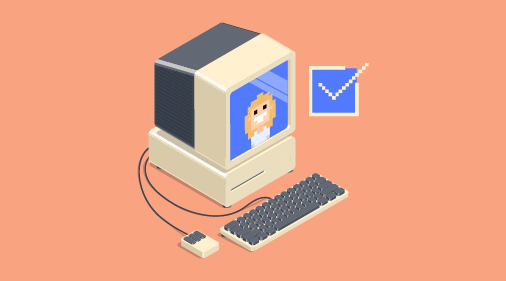Terrible reasons for choosing an ATS
There are many reasons you might find yourself looking for a new ATS. Speed, efficiency, usability… but how did you end up with the last one?

The software you’ve chained yourself to for the length of that hastily agreed contract has become a millstone around your neck. So before you leap head-first into another awkward relationship, stop and think. How did you get here?
1. Because it was there.
Like George Mallory climbing Everest or finding a couch that smells just a little like raccoon on the side of the road and taking it home, “because it was there” seems to be the prime reason for keeping an outdated ATS. It’s been in place so long that no one is responsible for it anymore and people keep using it. Though they will all curse it at every opportunity and keep multiple spreadsheets—because even Excel has usurped it in terms of usability. Using a massively outdated ATS also means you’ll get instant sympathy anywhere that recruiters gather. In certain circles just mentioning you use a particular ATS will either have you marked as worthy of pity or a masochist. At least they’ll probably buy you a commiseration drink.
2. Because you’ve inherited it.
Shakespeare left his wife his “second best bed.” Working in HR, much like being the wife of a 16th century playwright, can make for some lousy inheritance. With average employee tenure being less than the average Mephistophelian sales contract it’s no surprise that there are often a few “leftovers.”
Inheriting software that you had no role in choosing, but that is central to your daily role, can be galling. If an organization divides departments and they aren’t closely aligned, you can quickly end up with some great accountancy software with a free ATS thrown in. While this type of rudimentary workflow software might not cost you much financially, it does tend to snatch a little bit of your recruiter’s souls with each use.
3. Because everyone else doesn’t want it to change.
For some HR and Recruiting departments the relationship they have with their ATS is less a happy codependency and more parasitic.
While the software was once shiny and new, the passage of time has left it needy for resources. In turn, other systems have been built on it and other departments have become dependent on outputs that are in turn dependent on hasty, hacky workarounds that the system was never meant to be used for.
The ATS has become a precarious monolith at the center of a web of dependencies and now becomes untouchable. Talk of removing it is shot down quickly and new members of the team will learn to only mention it again in hushed tones. It’s time to realize you aren’t using the software anymore. The software is using you.
4. Because you’re in charge now, so why not?
So you landed that new job? Got a shiny new title and raise? Time to distance yourself from the last guy and make their achievements ring hollow in comparison to your new glorious reign. Where first to mete out justice in your new kingdom? In the Talent Game of Thrones what better way to lay the ghost of your predecessor than with the Valyrian steel of a new ATS?
It’s often very little time after a newly minted Head of Talent joins a company that the need to change a system arrives. This could be due to a number of factors; the will to replicate previous successes, the will to try a system they weren’t allowed to before (even to get to make the decision for themselves), the will to express control to fill the gap that a little imposter syndrome has made… This is an anti-pattern of behaviour, it gives the buzz of the new without having to assess (or praise) the previous incumbent of your current Iron Throne.
5. Because if you remove it, it will all fall down.
Before the current generation of usable HR and Talent software existed, we often made do with add-ons to ERP systems. They were the offspring of logistics software so naturally they treated candidates like packages to be shipped around. Some thinking that arose around the same time, largely due to hardware constraints, was that having one tool to do everything was better than having finely tuned, purpose built tools to perform the tasks you needed. Like having a massive, expensive, four month deployment plan, sledge-hammer over a perfectly formed set of watchmakers tools each crafted to do their job perfectly.
People liked this for a while and the software manufacturers responded by expanding their offerings into ever increasing silos of the businesses they sold to. Bloatware took over and all the while the cry of “integration” rang out. Some people are still forever chasing a mythical form of “integration” like meditating towards their own enlightenment. Meanwhile, for everyone who’s made the switch already, there’s flexibility, better candidate and user experience and an API.
6. Because you fell in love too fast.
They say “the grass is always greener” but if they were about to make the decision on which ATS to buy they might fall into the trap of thinking there was one particular spot that was even more than green. These are the thankfully few who fall so totally in love with a new feature they’re willing to bet the whole hillside on that one perfect picnic spot.
As buyers of software, we get marketed to a lot, and some of that marketing is bound to hit a particular sweet spot. In these instances it’s easy to get swept up and blinded by something that a salesperson wants to show you. The newer, shiner something gives us a little amnesia for the benefits of the current system. The truth only rearing its head when the contract is signed, we suddenly realize that it now takes 24 clicks to do what previously took three, or that the button marked “Reports” leads only to the upgrade page because you forgot to buy the add-on and now the budget is spent. Tell “them” to keep their adages about grass and be sure to look before you leap.
7. Because you were bribed.
“So did you enjoy the drinks/dinner/golf day/television/big bag of cash? Made a decision on that software yet?” There are sometimes darker reasons that a deal may have been done. It’s fair to say that some reasons are less than above board. If your decision making process comes with a decision on which perk to accept for choosing a particular vendor, chances are the decision making process might not be as lily white as others might have hoped. There are dozens of motivations for making a purchasing decision but if it’s based on the fact that your brother works for the supplier or the software comes with a free helicopter ride it might be a case of the software buying you, not you buying the software.
8. Because they really got me…
In a market with a lot of players there’s pressure for vendors to differentiate themselves and appeal to the current fixations of their buying audiences (in some cases with very little real correlation between marketing claim and product reality.) Company marketing is able to make ideological claims in the hope of garnering both attention and dollars. Talking authoritatively about a current topic is one thing, but shoehorning in some irrelevant product in the hope to convince a readership that their product is beneficial in these areas is at best disingenuous. Vendors might be telling everyone that their “mobile-first one-stop cloud-based marketplace collaboration app for unconscious bias reduction” is the “next big thing” but those claims have to hold up to scrutiny.
This goes beyond technical claims and attempts to be the market leader for a whole area of an audience’s concern, like diversity for example. In these cases buying the mistakenly-marketed tool is seen as doing enough to satisfy the end goal. “Use this tool and your onboarding will be seamless and perfect”, But these claims hide a truth that’s harder to confront. Real change will take more than these tools and believing the hype will mean you end up wondering why the magic wand you purchased doesn’t quite do the trick.
9. Because it was expensive.
So you have an ATS. You made the decision in good faith and can’t understand why the team don’t love it. After all, it was so expensive! This version of the sunk cost fallacy with a little hidden buyer’s remorse thrown in for good measure is remarkably prevalent in HR and Recruitment teams. When faced with a purchasing decision and unable to make a qualified discernment between options, there are a number of ways to get some more insight. Some are rational, “I’ll ask for a customer reference.” Some less rational, “This one is more expensive so it must be better.”
This irrationality may sometimes be credible in the face of a lack of information or other financial or time constraints. Even after the purchase is made, there can still be irrational thinking that is linked to the reputational cost on the behalf of the decision maker. The purchaser of a “not quite as advertised” system is forced into a position of advocacy for the software in order to justify the purchase. This is particularly hard on teams who come under greater scrutiny or even blamed for the poor performance of a new software tool. It’s an uphill struggle for the user of a tool to convince the purchaser (who only ever saw a sales demo) that it might not be all it’s cracked up to be.
10. Because you were afraid.
Finally, fear. Fear of being left behind. Fear of missing out. Fear of exposure. There’s an ATS-o-phobia that can creep into the decision to purchase a new system that will both hold responsibility for being the gateway to your business for new staff, and also reflect on you directly. For many people, choosing a new software system will be core to their business. The ATS is almost unique in that it’s rarely confined to one department. Its user base is cross department, and can include the more senior people in an organization. It’s a buying decision that has to be justified repeatedly, surviving the foibles and nit-picking of hiring managers from every angle.
Making the case to buy and implement a new hiring system is big decision—and there’s little doubt that it can be a daunting choice. The key thing to remember is to be aware of the compromises you’ll be making.
A software tool should aid efficiency rather than force the hand of its purchaser. If an ATS is changing the processes you’re currently using, be aware that this is also changing the way a candidate is introduced to your company culture.
A great system won’t just bend you to its will. It should support your current style and have clear areas where it visibly improves both candidate and your own experience. When evaluating systems, a little fear might be a good thing. But better to dial it down to “caution” and keep your guard up.
More Resources:




